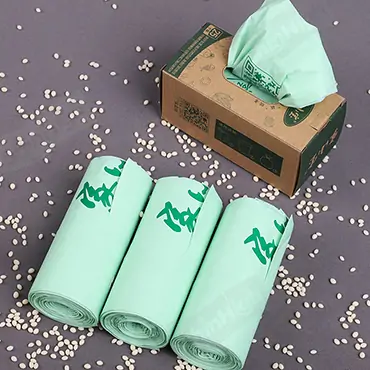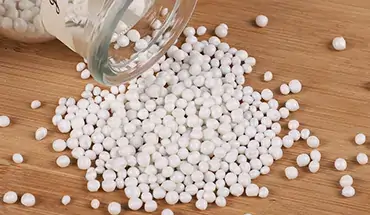Introduction
Plastic pollution has become a global crisis, and single-use plastic straws are one of the important factors causing this problem. The use of single-use plastics causes waste to accumulate in landfills, negatively impacting the soil and Marine environment.As consumers and businesses alike look for more sustainable alternatives, compostable PLA straws have emerged as a promising solution.
What are Compostable PLA Straws?
PLA(polylactic acid) is a biodegradable thermoplastic derived from renewable resources such as corn starch or sugarcane. Compostable PLA straws, made from these eco-friendly materials, offer a sustainable alternative to conventional plastic straws while sipping a drink.
The Environmental Impact of Plastic Straws
Plastic straws, often discarded carelessly, end up in oceans, landfills, and waterways. Marine animals may mistake these straws for food, leading to severe injuries and even death. If plastic decribes are accumulated in landfills, they exist for hundreds of years, polluting the soil environment. In the waterways, harmful substances in the straws will contaminate water sources. As a result, all these problems will pose a threat to human health. The environmental impact of plastic pollution is far-reaching, affecting ecosystems and human health.
The Need for a Sustainable Solution
To address the issue of plastic pollution, we need to adopt sustainable alternatives. Compostable PLA straws offer a practical and environmentally friendly solution. By choosing these biodegradable straws, businesses and individuals can significantly reduce their carbon footprint and contribute to a healthier planet.

Is it Healthier to Drink through A Straw?
By using biodegradable straws for your drinking, you can enjoy some oral health benefits.
-
Reduces enamel deterioration and tooth sensitivity
Acidic drinks, such as alcohol, lemonade, and apple cider vinegar, are likely to wear down the enamel layer of your teeth due to their high pH. This may increase the risk of oral diseases. People can avoid the risk of enamel degradation by drinking these beverages using biodegradable straws.
-
Prevent tooth decay
When you drink through a straw, your chances of tooth decay are reduced. It is highly recommended that sugar-sweetened beverages do not come into direct contact with teeth to avoid residual sugar between and on teeth, as this can increase the risk of tooth decay.
-
Prevent tooth discoloration
Drink through a straw to avoid tooth discoloration. We can’t deny that over time, strong drinks (especially coffee and tea) that are likely to cause dark stains can cause discoloration of teeth.
Drinking coffee or tea through a straw can help keep your teeth white.
Application Scenario of Biodegradable Straws
Biodegradable straws are rapidly gaining popularity as a sustainable alternative to conventional plastic straws. Here are some key application scenarios where these eco-friendly straws can make a significant impact:
Food and Beverage Industry
- Restaurants and cafés: Upgrading to PLA straws can enhance a business’s environmental image and attract environmentally conscious customers.
- Fast-food chains: Large chains can make a substantial difference by transforming to biodegradable straws, reducing their overall plastic footprint.
- Juice bars and smoothie shops: Biodegradable straws are ideal for thick and cold beverages, providing a sustainable solution without compromising the drinking experience.
Events and Catering
- Weddings and parties: Adding compostable straws to event setups can promote more sustainable and eco-conscious celebrations.
- Corporate events and conferences: Companies can demonstrate their commitment to sustainability by providing biodegradable straws at their events.
Retail and E-commerce
- Grocery stores: Offering biodegradable straws alongside other eco-friendly products can appeal to environmentally conscious shoppers.
- Online retailers: Incorporating biodegradable straws in product packaging can enhance the overall customer experience and reduce the environmental impact of online shopping.
Healthcare Facilities
Medical facilities such as hospitals, clinics, nursing homes, and care facilities can adopt biodegradable straws in patient care settings to reduce the generation of plastic waste for sustainability and reduce the environmental impact of their operations.
Benefits of Compostable PLA Straws
- Eco-Friendly: PLA straws are made from renewable resources and decompose naturally in commercial composting facilities.
- Biodegradable: Unlike conventional plastic straws, PLA straws break down into harmless substances, minimizing their impact on the environment.
- Durable and Functional: PLA straws are as strong and durable as plastic straws, ensuring a smooth drinking experience.
- Food-Safe: PLA is a food-safe material, making it safe for hot and cold beverages.
How to Choose the Right Compostable PLA Straws?
When selecting compostable PLA straws, it’s essential to consider the following factors:
Certifications: Look for certifications like ASTM D6400, which guarantees the compostability of the product.
- Quality and Durability: Choose straws from reputable suppliers prioritizing quality and durability.
- Cost-Effectiveness: While the initial cost of PLA straws may be slightly higher, the long-term benefits, including reduced waste disposal costs and a positive brand image, make them a cost-effective choice.
The Future of Sustainable Straws
As consumer awareness of environmental issues grows, the demand for sustainable products, including compostable straws, is increasing. The future of sustainable straws is promising, with ongoing research and innovation in materials and manufacturing processes.
Conclusion
By choosing compostable PLA straws, we can significantly reduce our reliance on single-use plastics and contribute to a more sustainable future. Let’s make a conscious effort to protect our planet and embrace eco-friendly alternatives.
FAQs
1. Do compostable PLA straws really decompose?
Yes, compostable PLA straws are certified to break down in commercial composting facilities under specific conditions.
2. How long does it take for a PLA straw to decompose?
The exact time it takes for a PLA straw to decompose depends on various factors, including temperature, moisture, and microbial activity. However, under optimal conditions, it can decompose within a few months.
3. Can I compost PLA straws at home?
While it’s possible to compost PLA straws at home, it’s crucial to have access to a commercial composting facility to ensure proper breakdown.
4. Which one has a better experience of using paper straws or compostable straws?
Paper straws tend to soften when exposed to water, especially hot water, which may affect the drinking experience. The temperature tolerance usually ranges from -10°C to 40°C, and they tend to dissolve easily when exceeding 40°C.
Compostable straws have good biodegradability and can be recycled or composted under the right environmental conditions. Compared to paper straws, they have less impact on the flavour of the drink, usually withstand temperatures between -10°C and 80°C, are more stable, and are closer to conventional plastic straws.
5. How can I encourage my customers to use compostable straws?
Educate your customers about the benefits of using sustainable straws and provide clear instructions on proper disposal. You can also offer incentives, such as discounts or loyalty points, to encourage their use.






